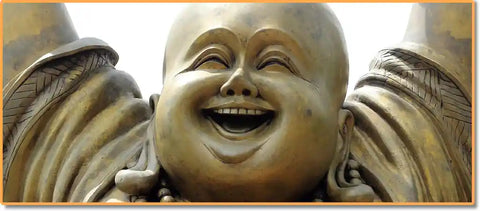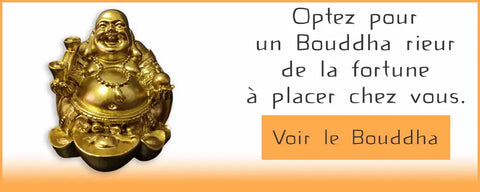The laughing Buddha and the meaning of his postures

Was the Laughing Buddha really a Buddha?
The image of Laughing Buddha is based on a Chinese monk named Budai (in Chinese) or Hotei (in Japanese) who lived in China in the 10th century. Buddhists considered him an incarnation of Maitreya, the future Buddha. Budai's round figure and benevolent face suggest contentment, magnanimity, and plenitude. Often called the Laughing Buddha, his characteristic smile symbolizes pure joy. Happy Buddha He is considered a symbol of good luck; it is believed that by rubbing his large head or round belly, he brings fortune and wealth. According to legend, he traveled from town to town spreading happiness. Wherever he went, he distributed sweets and small toys to children. Afterward, he would put down his bag, look up at the sky, and laugh heartily. When he smiled after spreading happiness, everyone gathered around him would laugh too. This signaled that his work was done and that he would move on to another town to spread happiness once more.
See the collection of Buddha statues
But he is more than just a lucky charm. He also represents enlightened awareness. His cloak, his staff, and his travel bag remind us to pay attention to the journey ahead, instead of focusing solely on the destination. The Laughing Buddha's large belly is a symbol of tolerance. It also shows us that prosperity and wealth can go hand in hand with enlightened awareness.
What is the meaning of the different statues of the Laughing Buddha?
He is seen in different poses, holding various objects and surrounded by animals or children. Here is the meaning of the 6 Laughing Buddhas:- When he holds a bag of silver and a gold ingot, he represents wealth and prosperity.
- When he sits on a large gold nugget with a smaller nugget in his hand ready to be offered to others, he symbolizes good fortune.
- When he holds a fan in one hand and a gourd in the other, he represents safety and good health. The fan wards off misfortune, while the gourd protects against illness. He protects you and keeps you safe during long journeys.
- When he carries a large bag on his shoulder, it is said to contain plenty of food to feed the poor and needy. He also brings positive energy.
- When surrounded by children, it symbolizes the protection of children's happiness.
- When he sits on the back of a dragon-turtle and atop a pile of coins and gold ingots, he symbolizes physical strength. The dragon-turtle is a legendary Chinese symbol representing the head of a dragon and the body of a turtle. The dragon represents courage and strength. The turtle signifies support and stability. This powerful combination also symbolizes long life and success.
Large Buddha head:


About the author: Elara Vey
Passionate about ancestral traditions and well-being practices, Elara shares her discoveries for Kaosix to help you integrate more harmony and meaning into your daily life.
Discover her journey →
